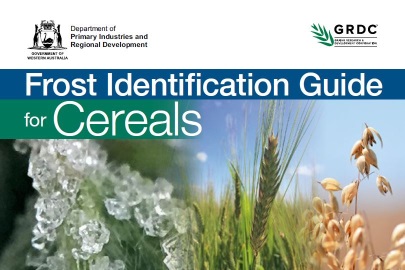Frost identification guide for cereals
Frost identification guide for cereals
Published: 23 Sep 2020
This guide assists with identification of frost damage and consideration of crop management decisions. Produced by the Department of Primary Industries and Regional Development, with co-investment from the Grains Research and Development Corporation it is wirebound and printed on water-resistant/heat-resistant paper.
Cereal crops are most susceptible to frost damage during flowering, however, they are also susceptible at the early booting and grain filling stages. Leaves, stems, anthers, ovaries and grain can all be affected by frost. A plant may suffer stem, flowering and grain frost, especially if a series of frost events occur throughout development.
This guide includes details on when to inspect crops, how to identify frost damage at the different stages of plant development, an overview of biotic and abiotic factors that may result in similar symptoms, and a list of weblinks to more information.
Key points
- Inspect crops 5–10 days after a frost event, particularly when they are between early ear-emergence and grain-filling, and when temperatures fall below 2°C at your nearest weather station.
- Examine the crop in the more susceptible low parts of the landscape first and if you find frost damage, proceed to higher ground.
- Walk through the crop and examine a whole plant every 20–30 paces.
- Peel back the leaves and look for stem damage and damage to the developing head.
- If the crop is at Z51 (head emergence) or beyond, open the florets on the head to check that the grain is developing.
Hard copies
Free copies are available from:
- DPIRD offices
- GroundCover Direct – email: ground-cover-direct@canprint.com.au or freephone: 1800 11 00 44
Download PDF
Region: National

